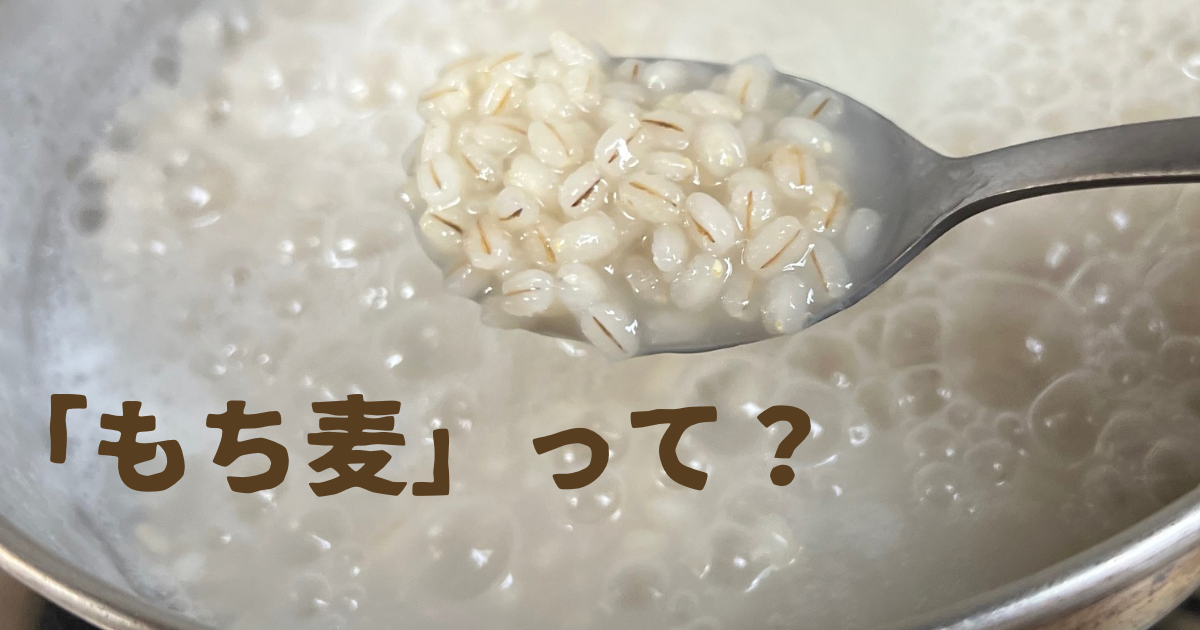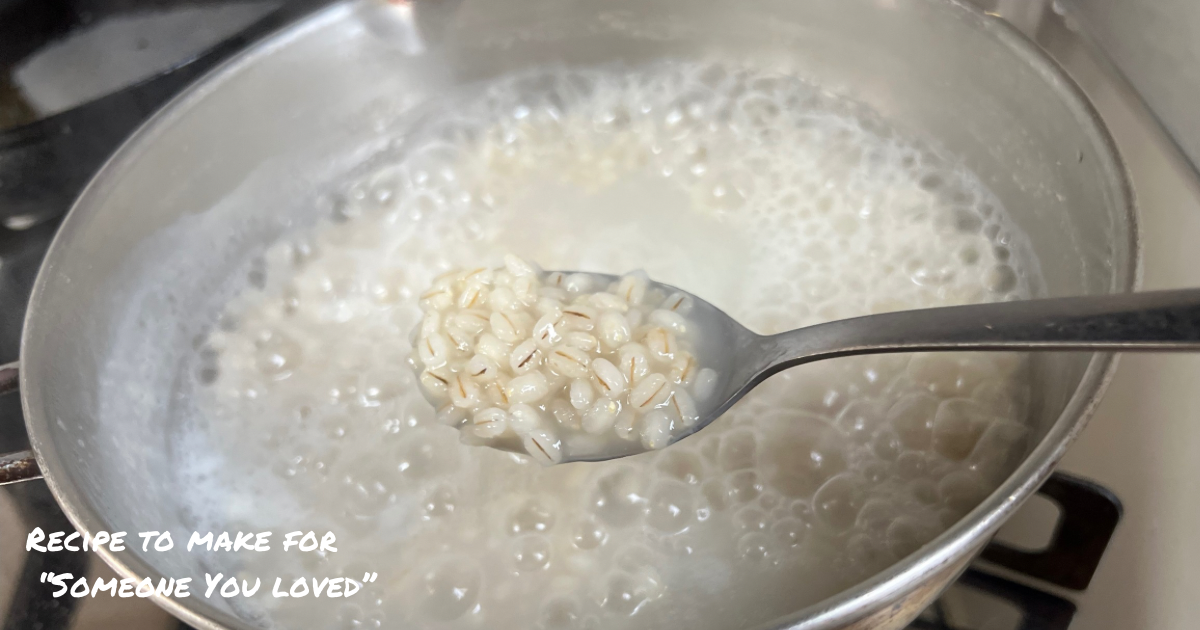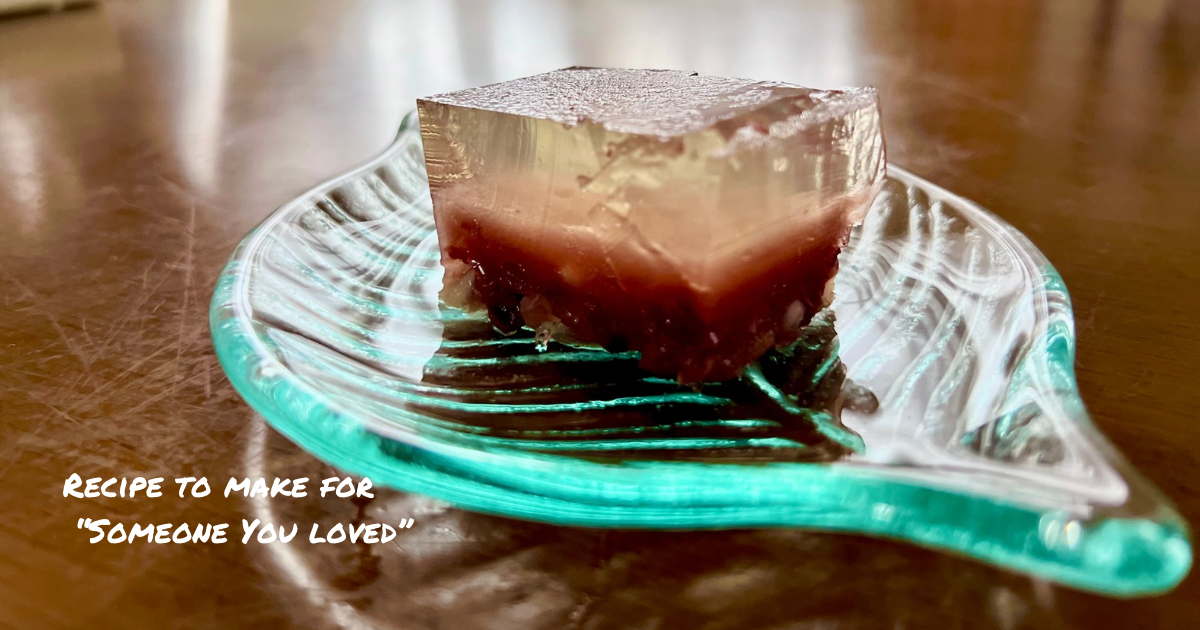
この間初めて「もち麦」を使ってみたのですがイメージよりも使いやすくて、プチプチ食感も面白い。最近テレビでも取り上げられていたので、今回のテーマにします。


もち麦の3つの良いこと
食物繊維が豊富
腸内環境を整え便通改善に役立つ水溶性食物繊維がたっぷり
低GI食品
血糖値の上昇が緩やかで食後の満腹感が長続きしやすくダイエット中の方にも人気
冷めても美味しい
雑炊、スープ、サラダなど冷たい料理にも使いやすく作り置きにもおすすめ

健康にいいイメージのもち麦ですが、体調や制限のある方には気をつけたい点もあります。
リン・カリウムがやや多め
もち麦は白米と同程度のたんぱく質(100gあたり約6g)を含みますが、ミネラル(カリウムやリン)を比較的多く含むため、腎臓疾患などでこれらの摂取制限がある方は、医師や管理栄養士に相談してからの摂取をおすすめします。
- カリウム:約230mg(白米は約89mg)
- リン:約150mg(白米は約94mg)
(出典:文部科学省「日本食品標準成分表2020年版(八訂)」)
食物繊維が豊富=取りすぎ注意
便通改善に役立つ一方で、水分制限のある方やガス・お腹の張りが出やすい方には合わない場合も。最初は少量から取り入れて、体の様子を見ながらにすると安心です。
食べ方
白米に混ぜて炊くのが定番
パッケージに書かれている分量を参考にすればOK→ もち麦だけで炊くとヘルシーな主食になる。

忙しい毎日。あらかじめ茹でた「もち麦」を冷凍しておくと使いやすい
![]()
たっぷりのお湯で20分ほど茹でます。麦の中央部分の芯がなくなったら、ざるにあげてヌメリを洗い流す。水分を切ったらラップかチャック付き袋にいれて冷凍庫へ! 3-5日程度は保存できます。

アレンジいろいろ!茹でた「もち麦」の使い方
● サラダのトッピング
白米のように粘りがない
→ 野菜とオリーブオイル・レモン・塩で地中海風に。ツナやサバ缶を加えると栄養バランスもアップ
こんなレシピもあります
● スープに加えて満足感アップ
→ ミネストローネや和風スープ、参鶏湯などにピッタリ
●デザートにも!
→あんこと合わせて、寒天よせなど和風スイーツにもアレンジ可能


最初は少量からスタート
よく噛んでゆっくり食べる
食事制限がある場合は、必ず専門家に相談を
どんな食材も、体調に合わせて「おいしく適量」が基本です!
|
|
Translation
I Tried Mochi Barley for the First Time—and I’m Hooked!
I recently gave mochi barley a try for the first time, and to my surprise, it was much easier to use than I imagined! I loved the chewy, slightly bouncy texture too—it adds such a fun twist to meals. Since it’s been getting some buzz on TV lately, I thought it would be a great topic to share today.
So, What Exactly Is Mochi Barley?
Mochi barley (or mochimugi in Japanese) is a type of barley known for its chewy, sticky texture—hence the name “mochi.” When you cook it with white rice, it’s an easy way to boost your meal’s nutritional value.
3 Great Things About Mochi Barley
1. Packed with Fiber
It’s rich in soluble fiber, which helps improve digestion and can ease constipation by supporting gut health.
2. Low GI Food
Since it has a low glycemic index, it helps keep your blood sugar levels stable and keeps you feeling fuller longer—perfect if you’re watching your weight.
3. Tastes Good Even When Cold
It’s great for make-ahead meals! Add it to soups, salads, or even grain bowls—it stays delicious even after cooling down.
If you’ve ever tried dieting, you’ve probably heard the term “low GI” before—it’s a common buzzword in the wellness world!
A Few Things to Keep in Mind
Even though mochi barley is known for its health benefits, there are a couple of points to be aware of, especially if you have specific dietary restrictions.
Higher in Phosphorus and Potassium
Mochi barley has about the same protein as white rice (around 6g per 100g), but it contains more minerals like potassium and phosphorus. If you have kidney concerns or are on a restricted diet, it’s best to check with your doctor or dietitian first.
- Potassium: approx. 230mg (vs. white rice ~89mg)
- Phosphorus: approx. 150mg (vs. white rice ~94mg)
(Source: Japan’s Standard Tables of Food Composition 2020)
Too Much Fiber Isn’t Always a Good Thing
Fiber is great, but if you’re prone to bloating or have to limit your water intake, start small and see how your body reacts.
How to Enjoy Mochi Barley
The Classic Way: Cooked with White Rice
Just follow the package instructions and mix it with your regular rice. You can even cook it on its own for a lighter, fiber-rich base.
Pro Tip: Boil and Freeze
If you’re always on the go, try boiling a batch and freezing it in small portions. Super handy!
How to Boil Mochi Barley
- Boil in plenty of water for about 20 minutes.
- When the center looks soft and translucent, strain and rinse off the starchiness.
- Drain well, then pack into ziplock bags or wrap in plastic wrap and freeze.
(Lasts about 3–5 days in the freezer!)
So Many Ways to Use It!
- Salad Topper
Since it’s not sticky like rice, it’s perfect in Mediterranean-style salads. Just toss with veggies, olive oil, lemon juice, and salt. Add tuna or mackerel for extra nutrients! - Soup Booster
Add it to minestrone, miso soup, or even Korean-style samgyetang for extra heartiness. - Sweet Treats
Mix with red bean paste and agar jelly for a unique twist on traditional Japanese desserts.
Final Tips for Getting Started
- Start with small portions to see how your body reacts
- Chew slowly and enjoy the texture
- If you have dietary restrictions, consult a professional
The key with any ingredient is to enjoy it in moderation and in a way that suits your body.

![[商品価格に関しましては、リンクが作成された時点と現時点で情報が変更されている場合がございます。] [商品価格に関しましては、リンクが作成された時点と現時点で情報が変更されている場合がございます。]](https://hbb.afl.rakuten.co.jp/hgb/49287150.ed6cba1d.49287151.a1f8342d/?me_id=1361769&item_id=10001573&pc=https%3A%2F%2Fthumbnail.image.rakuten.co.jp%2F%400_mall%2Fquickfactory%2Fcabinet%2F07416270%2F07416271%2Fmotimugi_800g_c.jpg%3F_ex%3D240x240&s=240x240&t=picttext)
